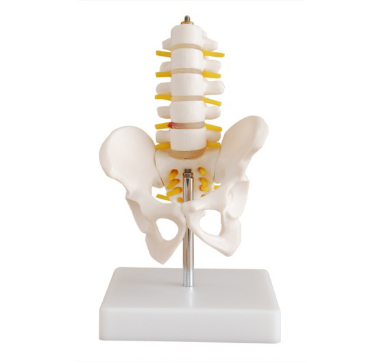As an important tool for medical education, scientific research and clinical application, spinal model is very important for its ability to accurately reproduce the complex structure of human spine. The following will explain in detail how the spine model achieves this goal from three aspects: technology, details and design concept.
First, high-precision scanning and three-dimensional reconstruction technology
In the process of making modern spinal models, high-precision medical imaging scanning technology, such as CT (computed tomography) or MRI (magnetic resonance imaging), is first used to scan the human spine without damage. These techniques capture every tiny structure of the spine, including vertebrae, discs, nerve roots, blood vessels, and more. The scanned two-dimensional images were then converted into a three-dimensional model through 3D reconstruction software, ensuring that the model was morphologically highly consistent with the real spine. This high-precision scanning and reconstruction technology provides a solid foundation for the accurate production of spinal models.

Two, fine carving and assembly process
On the basis of the three-dimensional model, the manufacturer will use fine engraving tools to further process and modify the model. Especially for the articular surface of the vertebrae, spinous process, transverse process and other details, the production staff will be carefully carved and polished to ensure that every detail of the model is accurate. In addition, for spine models composed of multiple parts, such as models with additional parts such as pelvis and femur, the manufacturer will also use a precision assembly process to accurately splicing each part together to form a complete spine system.
Third, scientific design concept and material selection
The spine model was designed not only for accurate representation of form, but also for functionality and durability. In the design process, the production personnel will reasonably arrange the various parts of the model according to the actual structure and functional characteristics of the human spine, so that it can truly simulate the physiological activities of the spine. At the same time, in the selection of materials, the production personnel will choose high-strength, corrosion-resistant, easy to clean materials, such as high-quality plastic or metal alloys, to ensure that the model in the long-term use of the process to maintain good performance and stability.
In summary, the spine model realizes the accurate reproduction of the complex structure of the human spine through high-precision scanning and three-dimensional reconstruction technology, fine engraving and assembly technology, and scientific design concept and material selection. This accurate reproduction not only provides a valuable physical reference for medical education, but also provides important support for scientific research and clinical applications.
